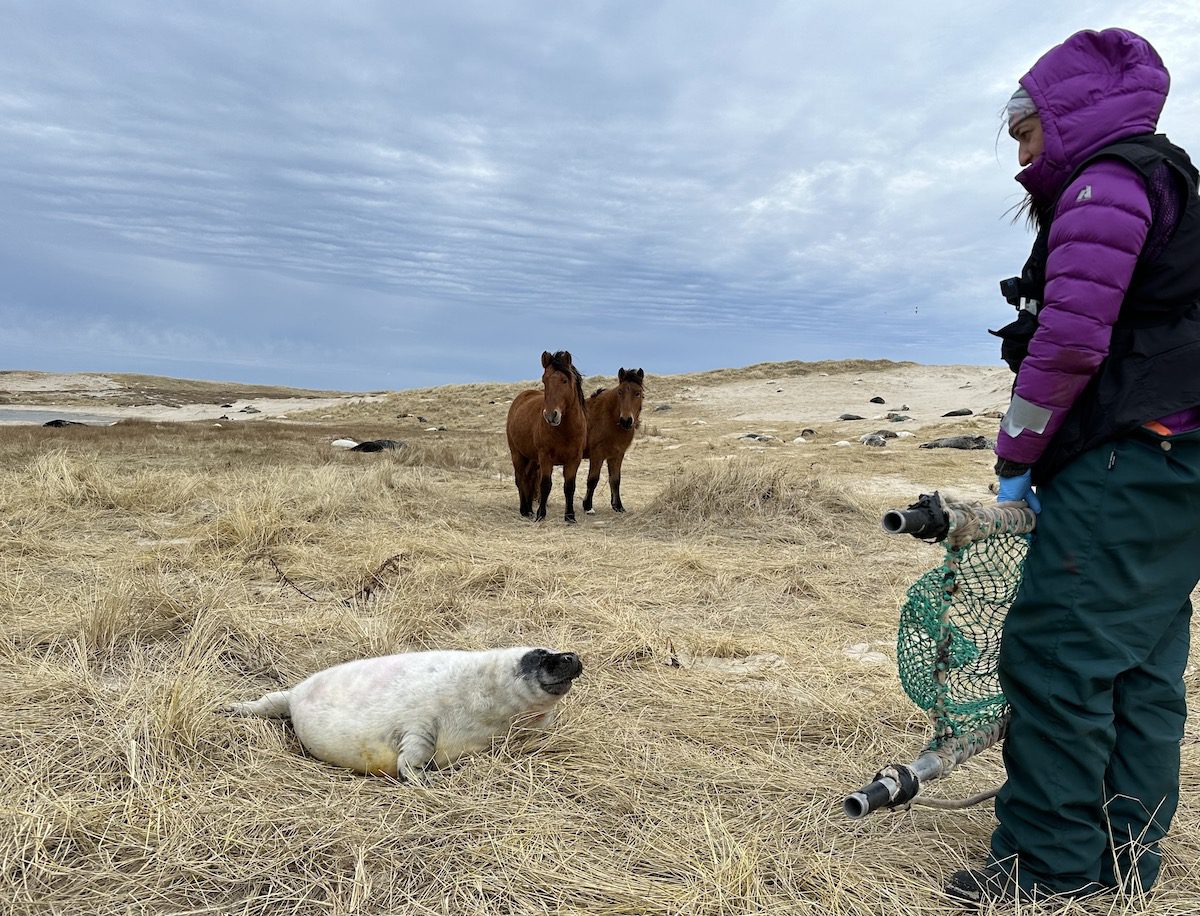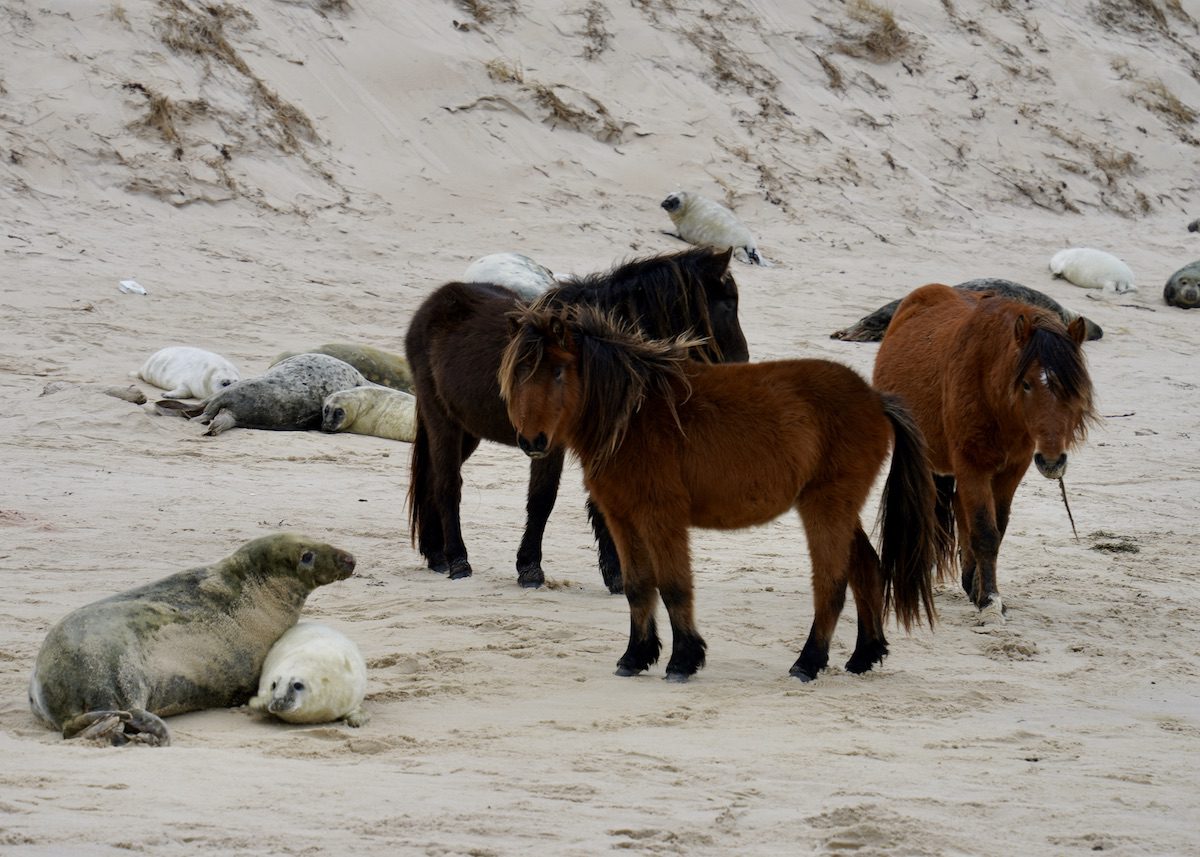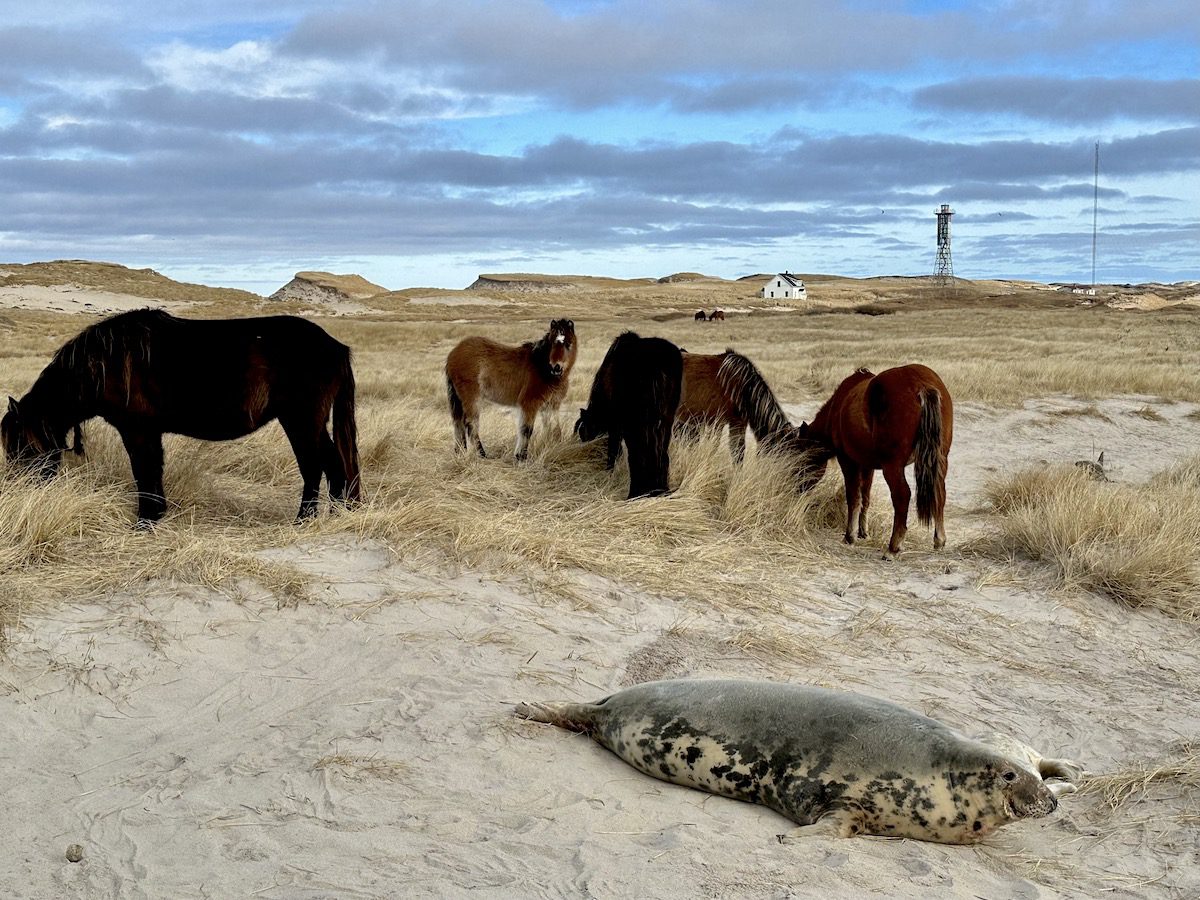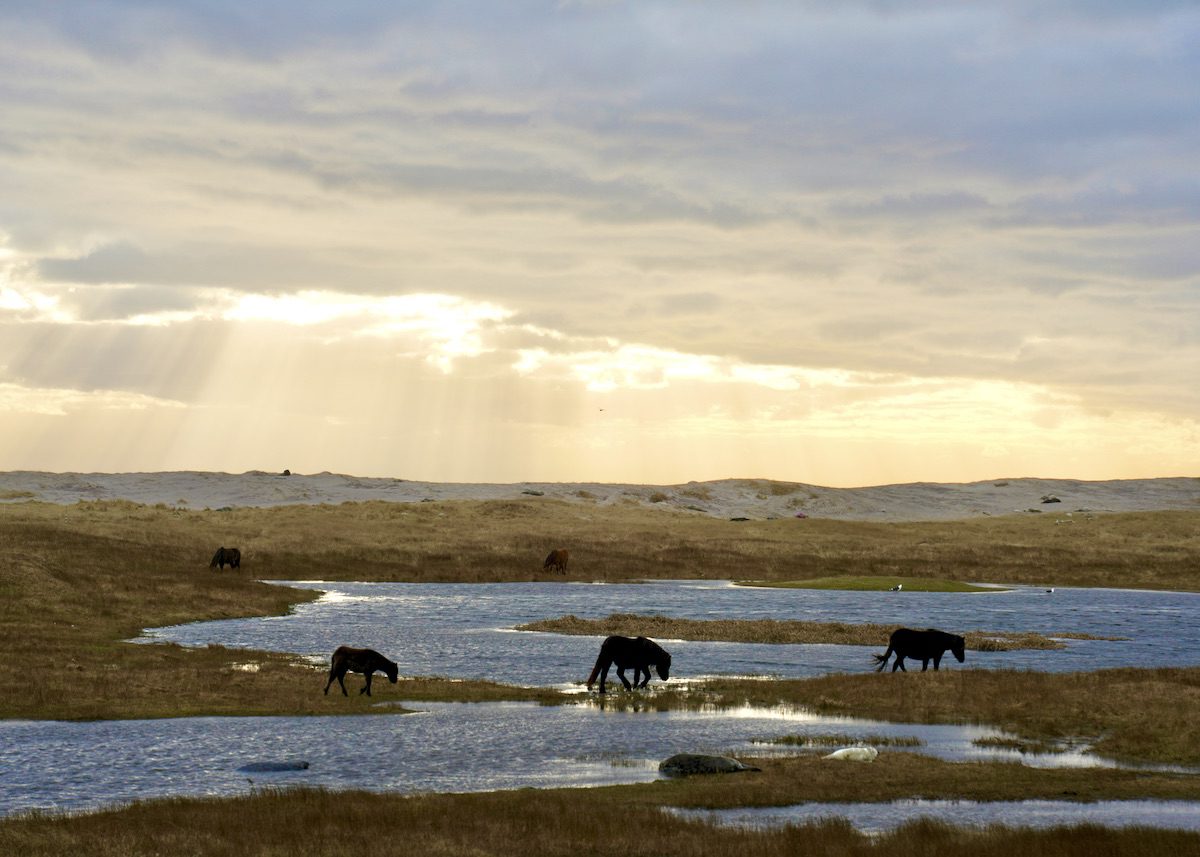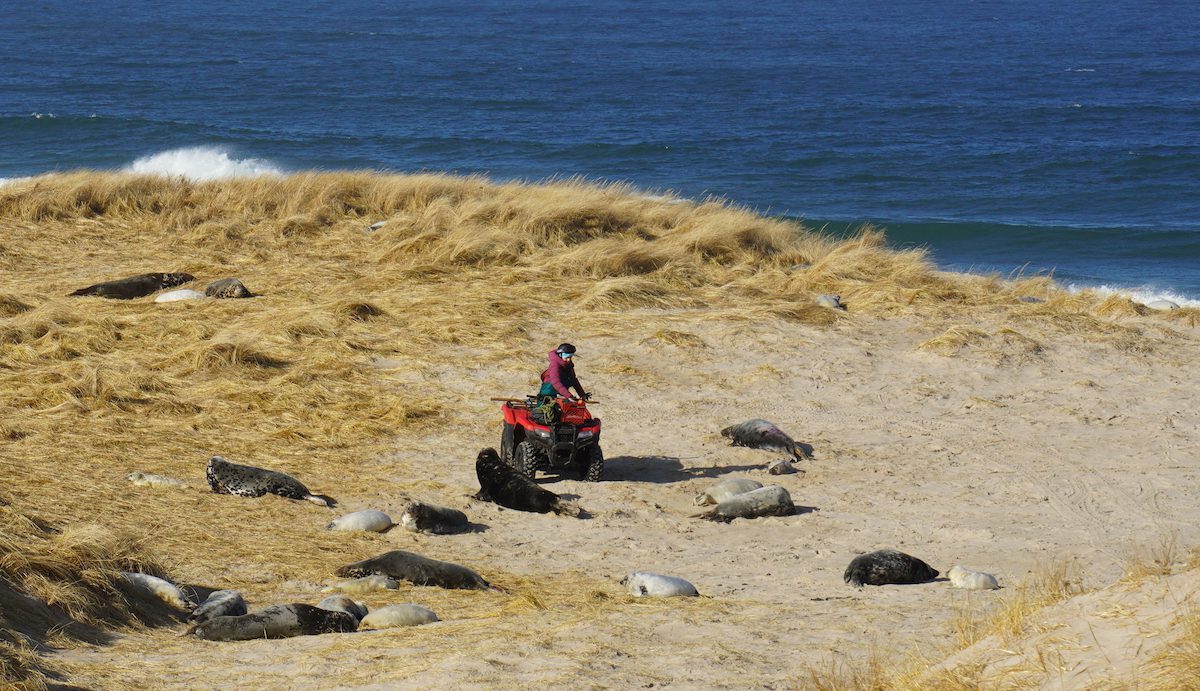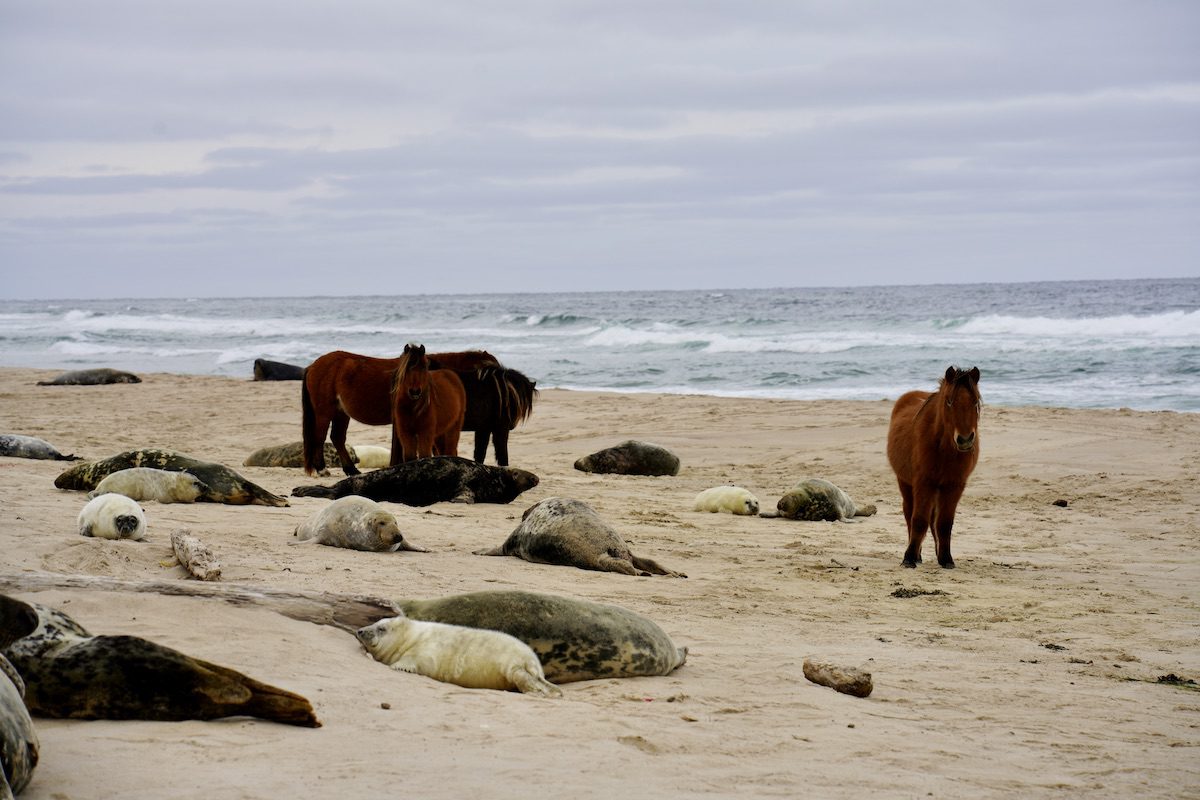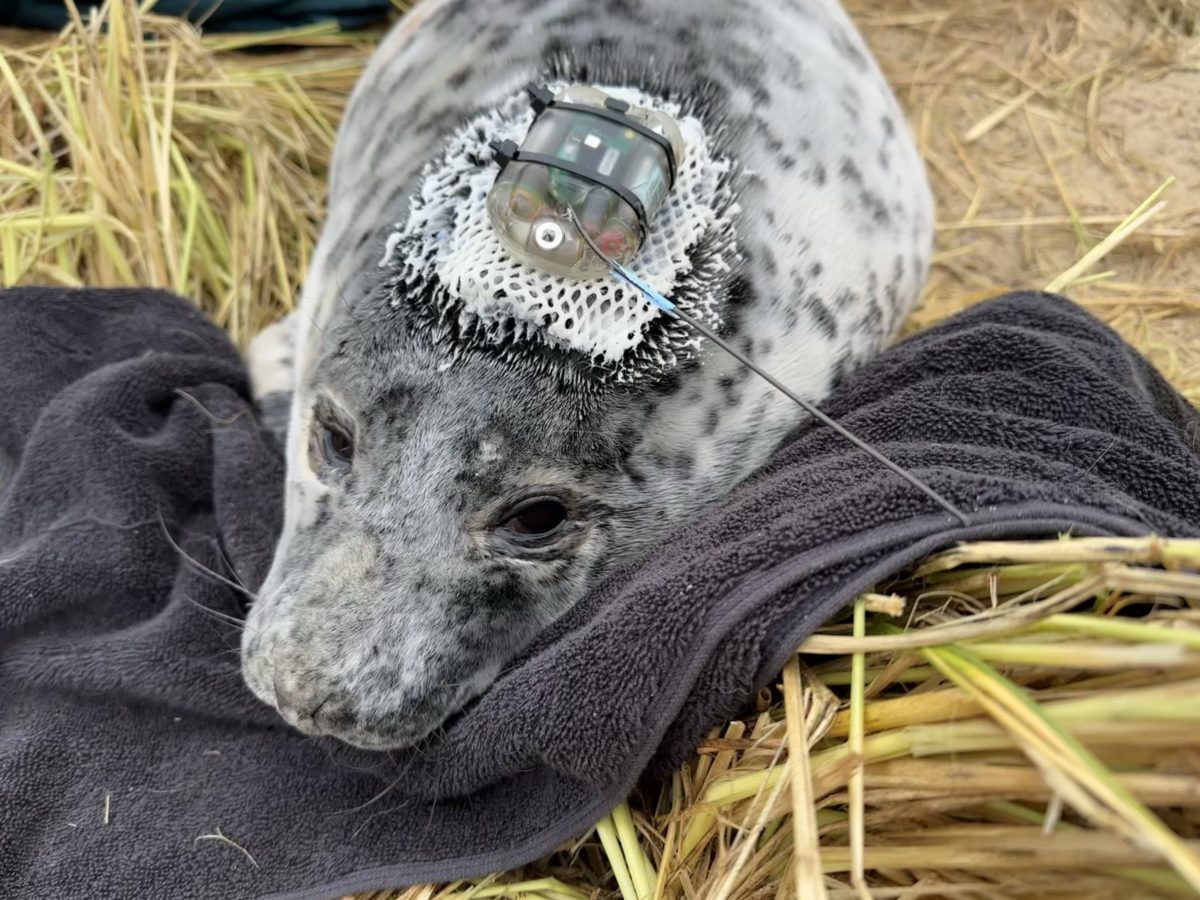Seals and Wild Horses on Sable Island, Nova Scotia
How far can a seal pup travel on its own in a month?
Thanks to a satellite tag, WHOI biologist Michelle Shero can now answer that question: over 500 miles!
After some intense fieldwork on the barrier beach of Sable Island, Nova Scotia over the 2023-24 winter, Shero tracked tagged gray seal pups from the comfort of her lab at WHOI on Cape Cod. She was amazed to watch as this two month-old pup came closer and closer, making landfall at the Cape Cod National Seashore by mid-March. She’ll continue to monitor this and other seal pups for the next 3-6 months, until the tag simply falls off when the pups shed their fur. Knowing more about the seals’ movements helps researchers understand their health outcomes and forecast population trends.
While East Coast gray seal populations have dramatically increased in recent years, a staggering proportion of pups don’t make it to their first birthday. Seal pups are fully weaned at 18 days old, and spend up to three weeks living off their fat stores until they take to the sea to forage on their own. Shero and her colleagues are investigating how iron in the mother seals’ diets impacts the pup’s diving capacity– and survival rates. An estimated 90% of Sable Island seal pups die during their first year, most likely because of the increased competition for food.
“Iron is how seals carry lots of oxygen in their bodies for long dives. It’s built into important proteins that basically act as their scuba tank,” says Shero. “We can test whether pups with bigger ’scuba tanks’ can make longer and deeper dives when they start feeding themselves, and have better survival rates. Do pups that get more iron from their mother’s milk get a boost?”
📸 by Michelle Shero, taken under permits DFO 23-28A and NMFS 25794 © Woods Hole Oceanographic Institution
Image and Visual Licensing
WHOI copyright digital assets (stills and video) contained on this website can be licensed for non-commercial use upon request and approval. Please contact WHOI Digital Assets at images@whoi.edu or (508) 289-2647.

